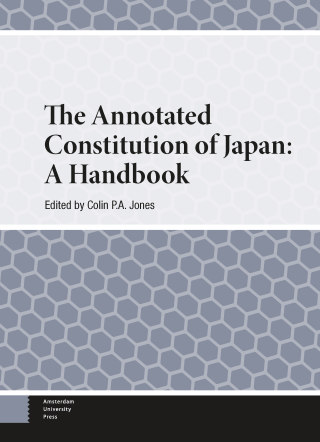
From 1st October, English-language AUP books will be published by Taylor & Francis. More details: AUP and Taylor & Francis Partner on English-Language Book Programme
H. Macnaughtan, Verity Postlethwaite (eds)
Handbook of Sport and Japan
The Handbook of Sport and Japan presents a fascinating collection of established and new scholarship, a valuable text for readers who want to use sport as lens to look more closely into a nation. The handbook draws on a diversity of perspectives, disciplines and experiences all of which respond to the challenge of including sport in the study of Japan. The chapters in the handbook convey what taking part in sport feels and looks like, highlighting the sporting accomplishments of Japanese athletes and teams, while also reflecting how the sporting experience interacts with economics, diplomacy, media, culture, demographics, gender, ethnicity and identity. Contributions pose key questions about what conclusions can be made when sport is placed in the foreground of key events in Japanese history, including pre-war industrialisation and empire building, to the post-war economic boom, the 2011 Tohoku Disaster and the recent COVID-19 pandemic.
Editors
- Title
- Handbook of Sport and Japan
- Editors
- H. Macnaughtan
- Verity Postlethwaite
- Price
- € 195,00 excl. VAT
- ISBN
- 9789048561056
- Format
- Hardback
- Number of pages
- 272
- Language
- English
- Publication date
- 25 - 10 - 2024
- Dimensions
- 17.4 x 24.6 cm
- Series
- Handbooks on Japanese Studies
- Discipline
- Asian Studies
- Also available as
- eBook PDF - € 194,99
Introduction: Verity Postlethwaite, Emily Barrass Chapman, Helen Macnaughtan—with contributions from Masami Sekine, Geoffery Z. Kohe, Takayuki Hata and Rei Saito;
Part One: Historical Developments of Various Key and Emerging Sports in Japan;
Chapter 1: Baseball, Japan’s National Pastime (William W. Kelly);
Chapter 2: A Survey of Rugby in Japan: From Early Play in 1864 to Hosting the World Cup in 2019 (Mike Galbraith and Helen Macnaughtan);
Chapter 3: Crafting Selves, Reproducing Capital: A Century or so of Japanese Golf (Angus Lockyer);
Chapter 4: “Boys, be Ambitious”: A Brief History and Cultural Analysis of Japanese Basketball (Aaron L. Miller);
Chapter 5: The Development and Popularity of Volleyball in Japan: The Impact of the ‘Witches of the Orient’ (Iwona Merklejn and Helen Macnaughtan);
Chapter 6: The Gender-related Discursive Function of Japanese Football since Its Professionalization (Yunuen Ysela Mandujano-Salazar);
Chapter 7: In the Ring and Beyond the Apron: Women’s Pro Wrestling as Physical Performance (Keiko Aiba);
Chapter 8: Surfing in Japan: From itago Riding to Surfing (Eri Mizuno);
Chapter 9: The Beauty of Winter Sports: The Popularity of Figure Skating in Japan (Masafumi Monden);
Part Two: Relationships Between Elements of the State, Society and Sporting Experiences in Japan;
Chapter 10: From Three-Legged to Two-Legged Races: The Rise of Competitive Women’s Sport in Japan (1910s-1920s) (Robin Kietlinski);
Chapter 11: Queer and Transgender Sport in Japan: Seitekishosusha (Gender and Sexual Minority) Athletes and Their Sporting Experiences (Michelle Ho);
Chapter 12: Tokyo’s (Non)-Olympics: 1940, 1964, 2020 (Christian Tagsold);
Chapter 13: The Paralympic Movement, Disability, and Sports in Japan (Dennis J. Frost);
Chapter 14: The Influence of Jigoro Kano: From Higher Education to the Japanese Olympic Movement (Helen Symons and Taro Obayashi);
Chapter 15: Intangible Legacy: The Memories and Continuities Between the 1964 and 2020 Tokyo Olympic Games, Focusing on the Olympic Torch Relay (Ai Aramaki and Geoffery Z. Kohe);
Chapter 16: Winter Sporting Cultures and Japan (Takayuki Yamashita, Verity Postlethwaite and Gyozo Molnár)
Part One: Historical Developments of Various Key and Emerging Sports in Japan;
Chapter 1: Baseball, Japan’s National Pastime (William W. Kelly);
Chapter 2: A Survey of Rugby in Japan: From Early Play in 1864 to Hosting the World Cup in 2019 (Mike Galbraith and Helen Macnaughtan);
Chapter 3: Crafting Selves, Reproducing Capital: A Century or so of Japanese Golf (Angus Lockyer);
Chapter 4: “Boys, be Ambitious”: A Brief History and Cultural Analysis of Japanese Basketball (Aaron L. Miller);
Chapter 5: The Development and Popularity of Volleyball in Japan: The Impact of the ‘Witches of the Orient’ (Iwona Merklejn and Helen Macnaughtan);
Chapter 6: The Gender-related Discursive Function of Japanese Football since Its Professionalization (Yunuen Ysela Mandujano-Salazar);
Chapter 7: In the Ring and Beyond the Apron: Women’s Pro Wrestling as Physical Performance (Keiko Aiba);
Chapter 8: Surfing in Japan: From itago Riding to Surfing (Eri Mizuno);
Chapter 9: The Beauty of Winter Sports: The Popularity of Figure Skating in Japan (Masafumi Monden);
Part Two: Relationships Between Elements of the State, Society and Sporting Experiences in Japan;
Chapter 10: From Three-Legged to Two-Legged Races: The Rise of Competitive Women’s Sport in Japan (1910s-1920s) (Robin Kietlinski);
Chapter 11: Queer and Transgender Sport in Japan: Seitekishosusha (Gender and Sexual Minority) Athletes and Their Sporting Experiences (Michelle Ho);
Chapter 12: Tokyo’s (Non)-Olympics: 1940, 1964, 2020 (Christian Tagsold);
Chapter 13: The Paralympic Movement, Disability, and Sports in Japan (Dennis J. Frost);
Chapter 14: The Influence of Jigoro Kano: From Higher Education to the Japanese Olympic Movement (Helen Symons and Taro Obayashi);
Chapter 15: Intangible Legacy: The Memories and Continuities Between the 1964 and 2020 Tokyo Olympic Games, Focusing on the Olympic Torch Relay (Ai Aramaki and Geoffery Z. Kohe);
Chapter 16: Winter Sporting Cultures and Japan (Takayuki Yamashita, Verity Postlethwaite and Gyozo Molnár)




